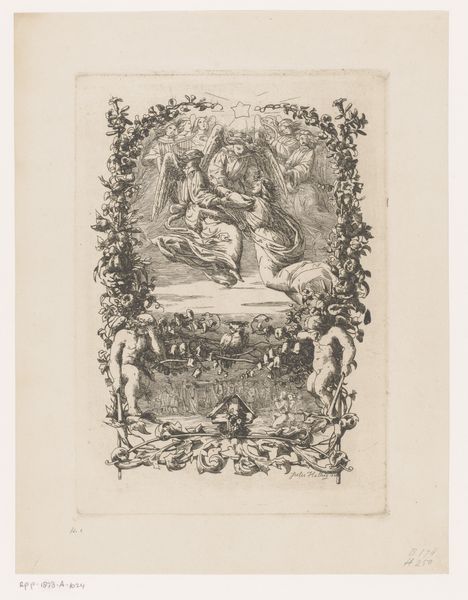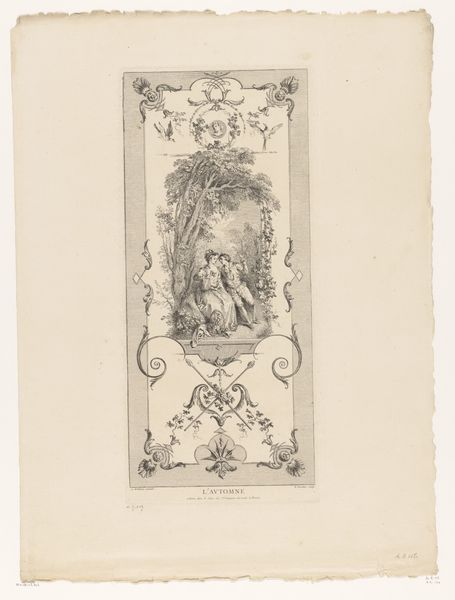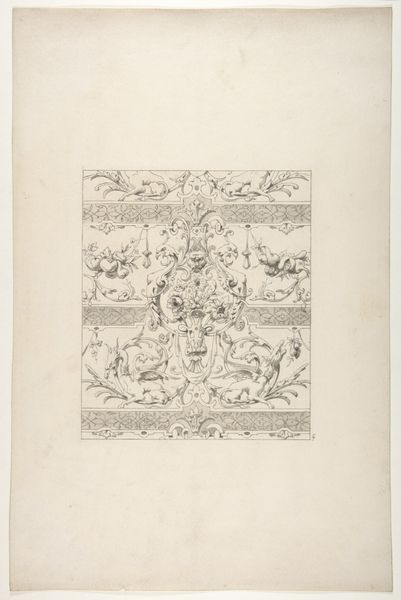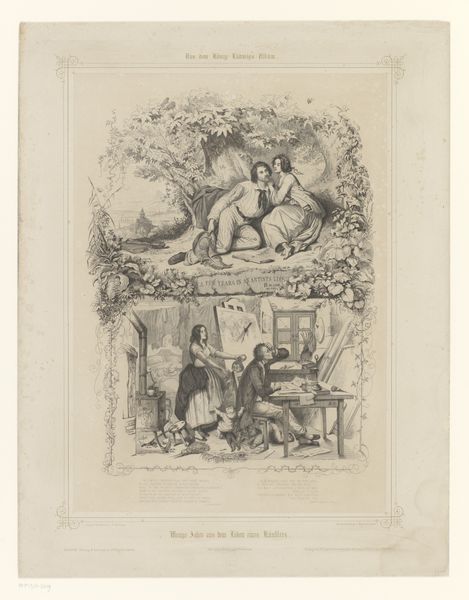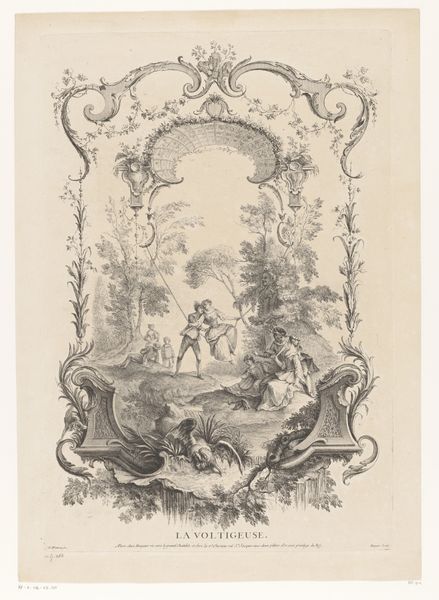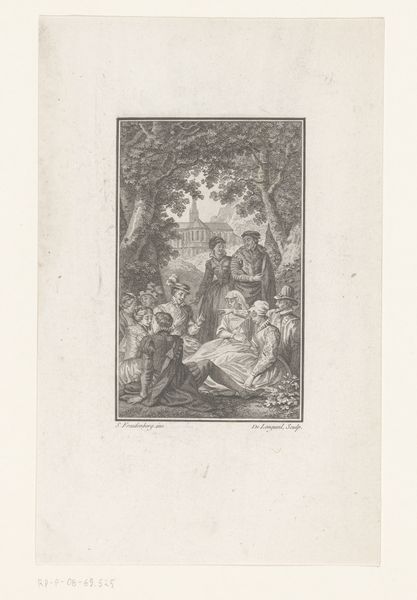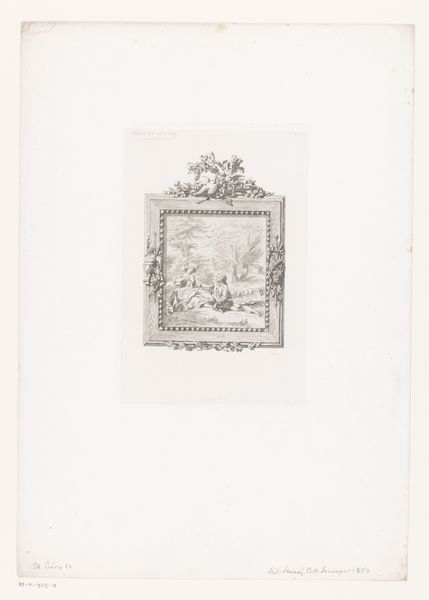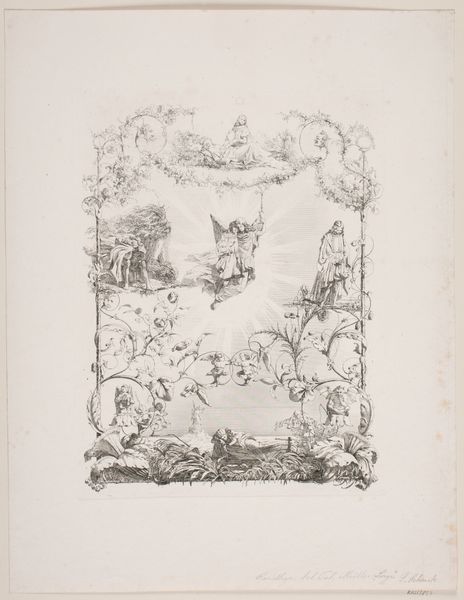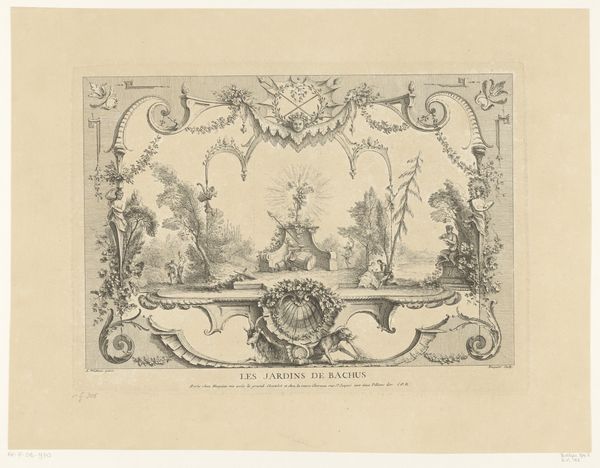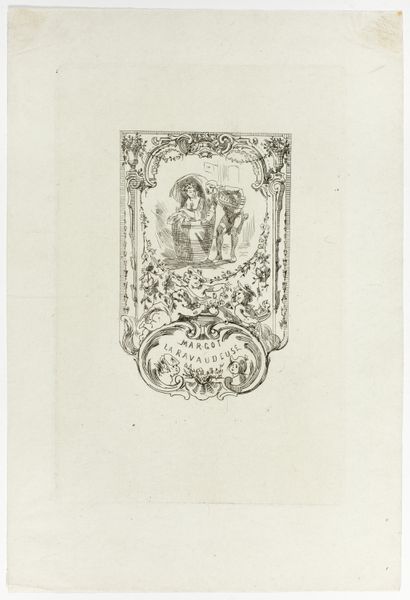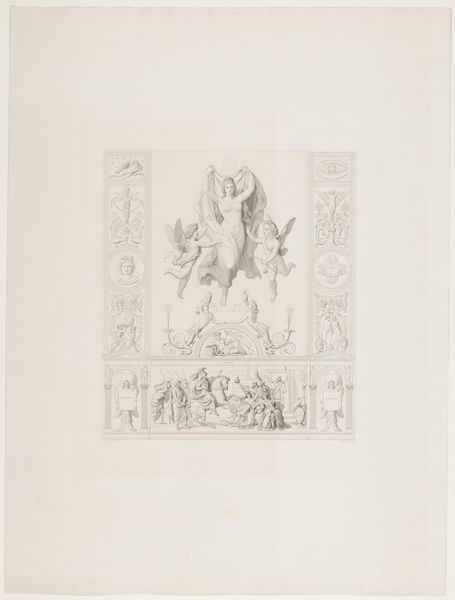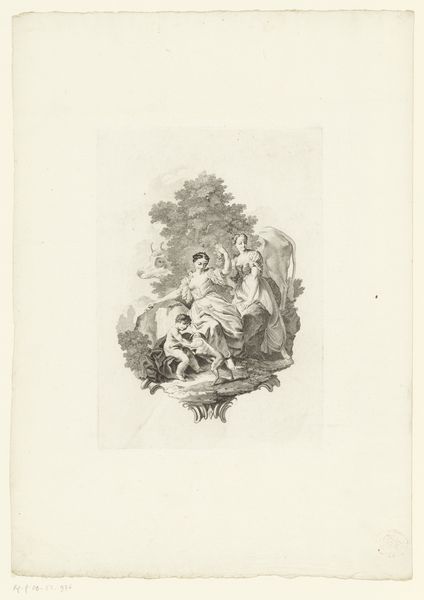
drawing, print, etching
#
drawing
#
allegory
#
baroque
# print
#
etching
#
figuration
Dimensions: height 405 mm, width 279 mm
Copyright: Rijks Museum: Open Domain
Editor: Here we have Francois Boucher's "Mussenvanger," an etching dating from around 1730-1770, at the Rijksmuseum. I am really drawn to the level of detail and the almost decorative way Boucher utilizes line. What's your perspective on this piece? Curator: What strikes me most is the conscious elevation of printmaking itself. Look at the allegorical imagery: a figure, likely representing abundance, enthroned amongst natural motifs. But then consider the materiality – etching. Boucher transforms a reproductive process into an object worthy of symbolic display. Editor: So you see the medium as intrinsically linked to the message? Curator: Absolutely. In Boucher's time, prints were increasingly accessible, driving consumption and shifting artistic patronage. "Mussenvanger"–The Sparrow Catcher–likely functioned within that burgeoning market, both capitalizing on and subtly commenting on its conditions. Consider, how does the detailed execution influence our perception of value? Is this merely a commodity, or does Boucher elevate it through his labor? Editor: That's interesting. I hadn't thought about the print market itself being part of the artwork’s meaning. It makes me wonder about the intended audience too. Was it aimed at collectors or perhaps a broader segment of the population? Curator: Exactly! Who was consuming these images, and how did that affect their cultural weight? These questions reveal the powerful interplay between materials, production, and social forces inherent in even seemingly decorative works like this. It makes one appreciate the role of the printmaker in circulating ideas and tastes in 18th-century society. Editor: Thanks for providing that viewpoint, it helps in examining a new lens on the role of art and materialism within artmaking and appreciation.
Comments
No comments
Be the first to comment and join the conversation on the ultimate creative platform.
